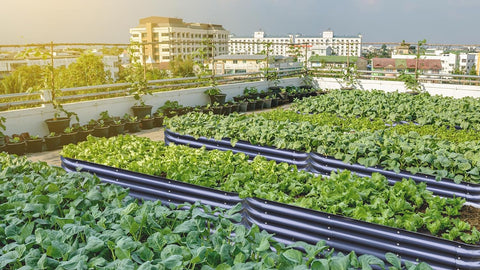Green Thumb Guide: Mastering the Art of Transplanting Plants in Your Garden
Gardening is a rewarding and therapeutic hobby that allows us to connect with nature and create a vibrant, flourishing outdoor space. One essential skill every gardener should master is transplanting plants. Whether you're moving seedlings to larger pots or transferring established plants to a new location in your garden, proper transplanting techniques can make a significant difference in the health and vitality of your green companions. In this guide, we'll explore the why, when, and how of transplanting plants to help you foster a thriving garden.
Why Transplanting Matters:
Transplanting is a crucial aspect of gardening that facilitates the healthy growth of plants. There are several reasons why transplanting is essential:
- Root Expansion: As plants grow, their root systems need more space to spread out and absorb nutrients efficiently. Transplanting allows for proper root development and prevents root-bound issues.
- Optimal Conditions: Transplanting provides an opportunity to relocate plants to more favorable conditions. This is particularly important if you've started seeds indoors or if your garden layout has changed over time.
- Enhanced Aeration: Over time, the soil in containers or small pots can become compacted, limiting the flow of air and water to the roots. Transplanting helps refresh the soil, promoting better aeration and drainage.
- Correcting Issues: If you notice signs of disease, pests, or nutrient deficiencies in a particular area of your garden, transplanting allows you to address these problems by moving plants to a healthier environment.
When to Transplant:
Timing is crucial when it comes to transplanting. While some plants can be transplanted throughout the year, others have specific windows of opportunity. Here are some general guidelines:
- Seedlings: Transplant seedlings when they have developed a strong root system and have at least two sets of true leaves. Usually, a few weeks have passed since germination.
- Established Plants: Transplant established plants during their dormant or less active periods. For many deciduous plants, late fall or early spring is ideal, while evergreens can be moved in early spring.
- Flowering Plants: It's generally best to transplant flowering plants after they have finished blooming. This minimizes stress on the plants and allows them to focus on root establishment.
How to Transplant Like a Pro:
To guarantee a successful transplant procedure, adhere to following steps:
- Prepare the New Site: Dig a hole in the new location that is slightly larger than the plant's root ball. Amend the soil with compost or well-rotted manure to provide a nutrient-rich environment.
- Watering: Water the plant thoroughly a day or two before transplanting. This helps the soil hold together, reducing stress on the roots during the move.
- Gentle Removal: Carefully remove the plant from its current container or location, taking care not to disturb the roots excessively. Tease apart the roots carefully if they are tightly intertwined.
- Planting Depth: Plant the transplanted specimen at the same depth it was previously growing. Ensure that the crown of the plant (where the roots meet the stem) is level with the soil surface.
- Watering After Transplanting: Water the plant immediately after transplanting to help settle the soil and reduce air pockets around the roots. Continue to water regularly in the following weeks, especially during dry spells.
Conclusion:
Transplanting plants is a valuable skill that empowers gardeners to optimize their green space for health and productivity. By understanding the why, when, and how of transplanting, you can foster a garden that not only survives but thrives. So, put on your gardening gloves, grab your tools, and embark on a journey to give your plants the best possible home for robust growth and vibrant blooms. Happy gardening!


